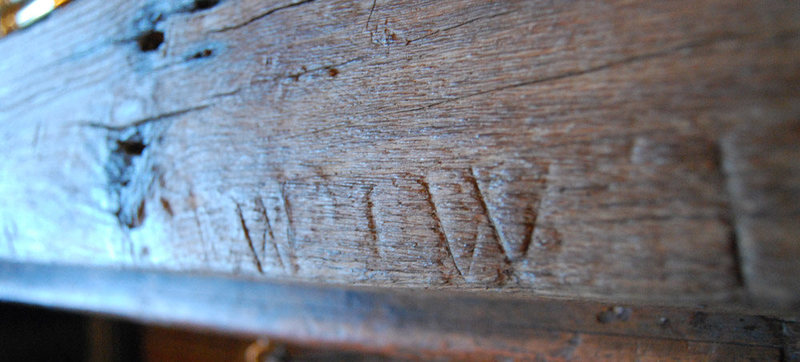
Daisy chain circles and “V” carvings hidden in the nooks and crannies of historic homes and properties across the United Kingdom, once thought to be carpenter’s symbols, hint at Tudor superstition and folklore.
Apotropaic marks, or witches’ marks, have been found in various properties throughout the UK—from Wookey Hole Caves in Somerset, to Shakespeare’s birthplace in Stratford-Upon-Avon, to even the Tower of London. Most of the carvings appear in buildings constructed between the 16th and 18th centuries.
The “apotropaic” terminology comes from the Greek term “apotropaios,” meaning “averting evil.” Witches or their evil conjured spirits were thought to attempt to enter homes via doorways, hearths, and windows, and hide in shadows made by the nooks and crannies of the house. It was believed that once they had entered the property, witches and evil spirits would want to attack the inhabitants, or ruin the most valuable possessions of the owner. Tudor proprietors took a proactive approach to the issue, and carved the apotropaic marks near where items of value were stored.

“Ritual marks were cut, scratched or carved into our ancestors’ homes and churches in the hope of making the world a safer, less hostile place,” said Duncan Wilson, Chief Executive of Historic England, last year. “They were such a common part of everyday life that they were unremarkable and because they are easy to overlook, the recorded evidence we hold about where they appear and what form they take is thin.
”The most popular witches’ mark features a series of intertwining daisies in a wheel design, also known as a hexafoil. The linking design was intended to entice the malevolent spirit and trap them in an infinite loop, thus preventing them from progressing any further into the property. Alternatively, Tudor homeowners would also call upon the supreme divine power of the Virgin Mary for protection, carving Marian symbols such as the letters AM for “Ave Maria,” M for “Mary,” or VV for “Virgin of Virgins.”

Belief in witchcraft dates back to ancient Babylon, and has appeared in texts from the Greeks…
The post The DIY Carvings Designed to Deter 17th-Century Witches appeared first on FeedBox.